Bare wood can be beautiful, but it’s vulnerable to damage without proper protection. Exposure to sunlight, rain, and temperature fluctuations can cause wood to gray, crack, and deteriorate over time. Staining creates a protective barrier that shields the wood from these harmful elements, preventing moisture absorption and UV damage. Here’s how to stain your exterior wood so you get a great finish that lasts.
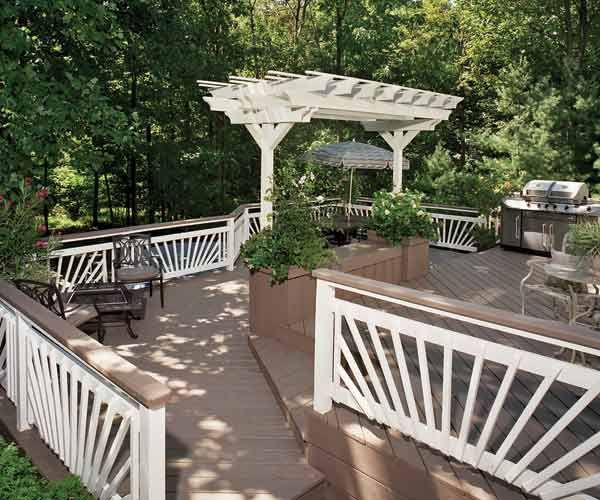
Benefits of Proper Exterior Wood Staining
Staining offers numerous advantages for your exterior wood:
- Protection against moisture and sun damage
- Enhanced durability and longevity of the wood
- Improved appearance with a range of color options
- Easier maintenance and cleaning
- Prevention of warping, splitting, and cracking
Investing in staining upfront will save money on repairs and replacements in the long run.
Types of Exterior Wood Stains
Choosing the correct type of stain helps achieve your desired look and level of protection.
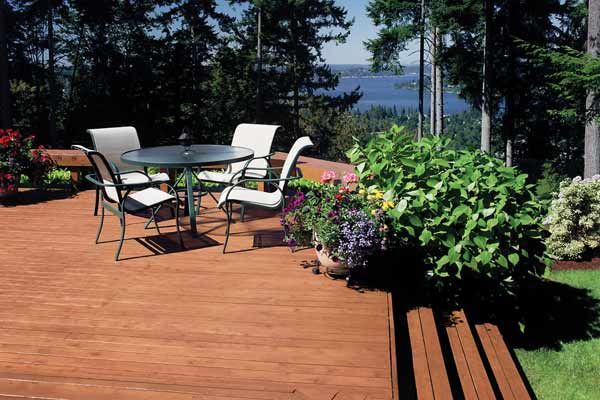
Translucent Stains
Translucent stains, or clear or natural finishes, offer the most subtle color change while providing protection. These stains allow the wood’s natural grain and texture to show through, making them ideal for newer or well-maintained wood.

Semi-Transparent Stains
Semi-transparent stains provide more color than translucent options, allowing only some wood grain to show through. These stains are excellent for adding color while still maintaining a natural wood appearance.
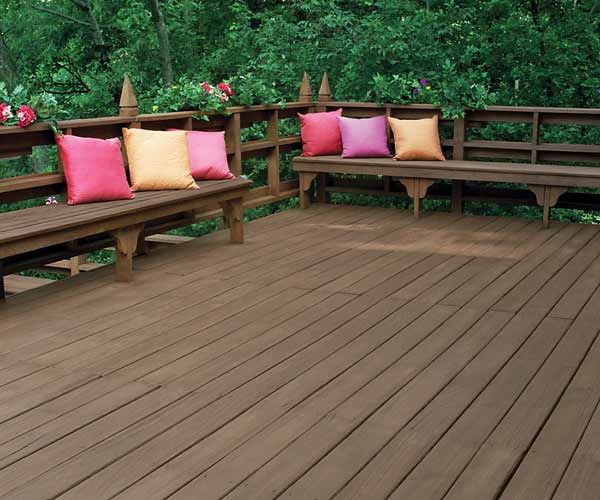
Solid Stains
Solid stains provide the most opaque coverage, similar to paint. They’re ideal for older wood or when you want to change the color of your wood surface dramatically. While they obscure the wood grain, they still allow the texture to show through.
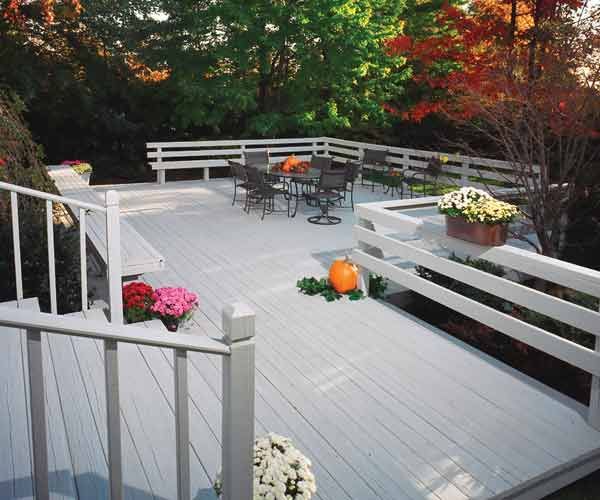
Factors To Consider When Choosing Stain
When choosing a stain, keep these points in mind:
- Wood condition: New wood may benefit from a translucent stain, while older or weathered wood might need a semi-transparent or solid stain.
- Desired appearance: Consider how much wood grain you want to show through.
- Level of protection needed: More opaque stains generally offer greater protection against the elements.
- Ease of application: Some stains are easier to apply than others, which can be necessary for DIY projects.
- Maintenance requirements: Different stains have varying maintenance needs and reapplication schedules.
Stain Color Selection Tips
Choosing the right color is a big factor in the overall look of your project. Here are some tips:
- Consider your home’s exterior color scheme to make sure the stain complements it.
- Test the stain on a small, inconspicuous area before committing to the project.
- Remember that the final color may appear different from the sample due to the wood’s natural color and texture.
- Think about how the color will age over time and whether it will still suit your preferences in the future.
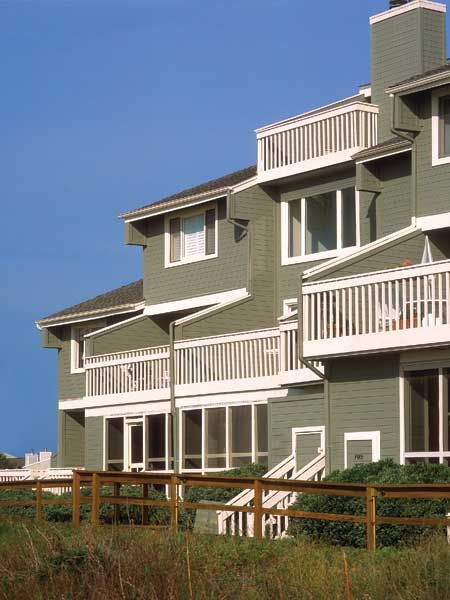
Preparing Exterior Wood for Staining
Proper preparation is key to achieving a professional-looking finish that lasts.
Cleaning the Surface
Before staining, thoroughly clean the wood surface to remove dirt, grime, and existing finishes. Use a wood cleaner or a mixture of water and mild detergent, scrubbing with a stiff brush. Rinse thoroughly and allow the wood to dry completely before proceeding.
Sanding Techniques
Sanding helps open the wood pores, allowing for better stain penetration. Use medium-grit sandpaper and sand in the direction of the wood grain. After sanding, remove all dust with a tack cloth or vacuum.
Addressing Existing Damage
Inspect the wood for damage, such as cracks, splinters, or rot. Fill small cracks with wood filler and replace more extensive areas of damage. Confirm all repairs are complete and dry before staining.
Step-by-Step Exterior Wood Staining Process
Collect everything you’ll need before starting:
- Chosen wood stain
- Brushes, rollers, or sprayers for application
- Protective gear (gloves, goggles, and a respirator)
- Drop cloths or plastic sheeting
- Stirring sticks and clean rags
- Painter’s tape for protecting areas you do not want to stain
- Ladder or scaffolding for higher areas
- Pressure washer (if applicable for deeper cleaning)
- Wood brightener (optional but recommended for older wood)
Applying the Stain
Start by stirring the stain thoroughly for an even color distribution. Mask off areas where you don’t want the stain using painter’s tape.
Depending on the surface size, apply the stain in thin, even coats using a brush, roller, or sprayer. Work in small sections, maintaining a wet edge to avoid lap marks. Apply the stain in long, smooth strokes in the direction of the wood grain.
Allow the first coat to penetrate according to the manufacturer’s instructions. Apply additional coats if desired, following the product guidelines. Remove painter’s tape before the stain fully dries to avoid peeling.
Drying and Curing
Allow the stained wood to dry completely before use. Drying times vary based on the product and weather conditions but generally range from 24–48 hours. Full curing may take up to a week. Avoid heavy use or placing furniture on newly stained surfaces during this time. This ensures a durable finish that won’t easily mar.
Maintaining Exterior Stained Wood
Regular maintenance will help preserve your stained wood and extend its lifespan.
Regular Cleaning Practices
Clean your stained wood surfaces regularly with a mild soap and water solution. Avoid harsh chemicals or pressure washing, which can damage the finish. Rinse thoroughly and allow to dry completely.
Touch-Up Techniques
For small areas of wear or damage, lightly sand the affected area and apply a thin coat of stain to blend with the surrounding finish. Use the same stain product for consistency.
When To Reapply Stain
The need for reapplication depends on various factors, including the type of stain used and exposure to the elements. Generally, you should reapply stain every 2–3 years for horizontal surfaces such as decks and every 3–5 years for vertical surfaces such as fences or siding.
Long-Term Protection Tips
To further protect your stained wood, consider these long-term maintenance tips:
- Move furniture and other objects periodically to prevent uneven wear.
- Reseal high-traffic areas more frequently to maintain their appearance.
- Trim nearby plants to reduce mold and mildew growth.
Common Mistakes To Avoid in Exterior Wood Staining
Be aware of these common pitfalls:
- Skipping proper surface preparation
- Applying stain in direct sunlight or extreme temperatures
- Using too much stain, which can lead to a sticky finish
- Not allowing adequate drying time between coats
Expert Tips for a Professional-Looking Finish
To achieve the best results:
- Test the stain on a small, hidden area first.
- Use high-quality brushes or applicators for smoother application.
- Keep a wet edge to avoid lap marks and for even coverage.
- Follow the manufacturer’s instructions carefully for optimal performance.
- Maintain a consistent application technique for uniform results.
- Take breaks to assess your work in different lighting, ensuring even coverage.
